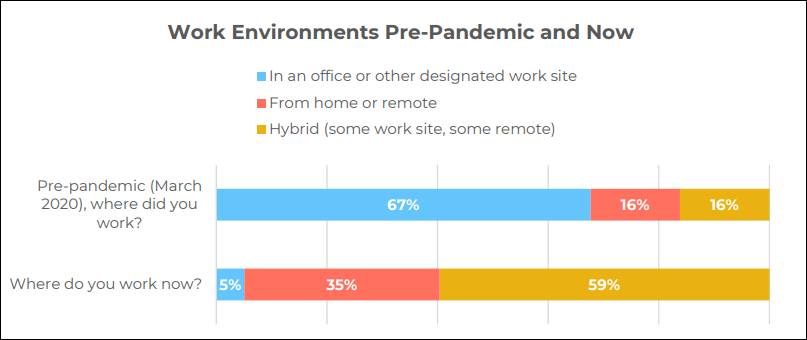A whopping 95% of you reported either working remotely or a hybrid of both home and office in our 2023 Nonprofit Communications Trends Report. This represents a shift in working locations for 64% of nonprofit communicators.
When lockdowns started happening across the world in 2020, we shared several posts on how to make the best of working from home for those who never had to before. Below you’ll find a list of the ones we think are most important.
Our Top 10 Tips for Working from Home
1. Set Up Remote Access to Work Files
Whether it’s Google Docs, Dropbox or any of the other options out there, to effectively work remotely, you and your team need easy access to documents, photos, etc. Project management software like Asana can also help to keep everyone in sync.
2. Clearly Define Roles and Expectations of the Team
Open, clear communication is even more important when you aren’t in the same physical space. Be specific about deadlines, availability, and other important details. Talk about how your office culture translates (and not) to a home environment.
3. Account for Technology Limits
Your Wi-Fi may slower or you may have an older computer or a smaller monitor. Whatever your limitations, be sure to clearly convey them to your employer and colleagues so they can make adjustments or provide you with what you need.
4. Set Boundaries with Family, Friends and Co-Workers
Set clear boundaries between work and personal time. Explain to your friends and family that even though you are home, you are at your job. And conversely let co-workers know when you are no longer available.
5. Stick to Your Schedule
Be available when your clients and colleagues are used to you being available, but don’t work more than you would at the office.
6. Have a Dedicated Workspace
If your work situation has permanently changed from working in the office to at home, it’s time for a desk. No more co-opting the dining room table. You should ideally have a space with a door or someway to separate yourself from everyone else in the house.
7. Get Dressed
You should still be comfortable, but changing out of whatever you were wearing when you slept or worked out, etc. signals your brain that it’s time to work.
8. Take Proper Breaks
Running to the kitchen to get a snack that you eat at your desk is NOT a proper break. Call or text your family or friends to combat the isolation. Get away from your workspace completely a few times a day and get up or stretch at least every hour.
9. Take Your Paid Time Off
10. Enjoy the Flexibility
Do something for yourself when you normally would be commuting. Have lunch with your spouse or friends. Pick your kids up from school or play with your pets. If you know you get more writing done in the late afternoon or can better focus on a project after your kids are in bed, then do that.







